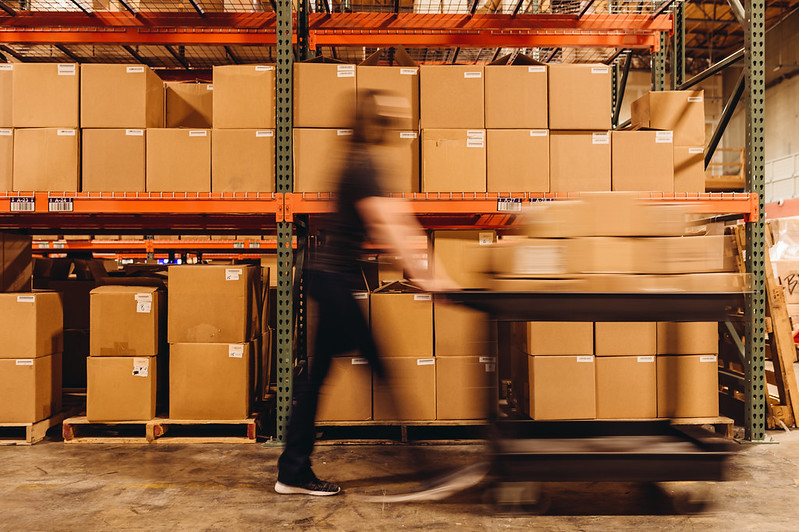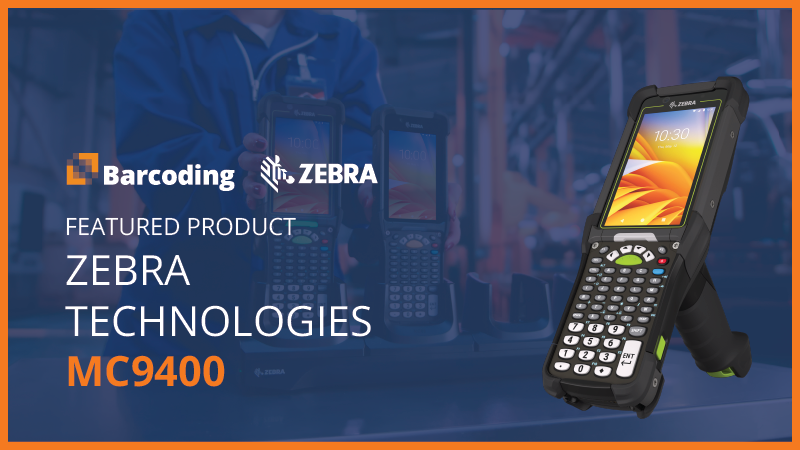There have never been more, or larger, warehouses and distribution centers than there are today, and the sheer volume of goods going in and out has skyrocketed. Fortunately, the tools the industry is using to keep track of their assets and manage inventory have evolved, too, from simple pen-and-paper logging to far more sophisticated (and accurate) solutions, such as RFID (radio frequency identification). RFID has demonstrated remarkable power to make teams more efficient, accurate, and connected—and, in turn, save time and improve productivity. Let’s take a look at what it is, how it works, and the features that make it so useful in today’s warehouses.
What Is RFID?
RFID is a wireless technology that enables the transfer of data using radio-frequency electromagnetic fields. Sounds pretty space-agey, but it’s become so commonplace (and cost-effective) that it’s being used in just about every industry you can imagine.
How it works is pretty simple: items (individually or as part of a shipping container) get an RFID tag attached to them; this tag links to data about whatever it is organizations want or need to know, like the item’s manufacturer, the date manufactured, size/weight, handling instructions, price...anything that increases visibility. The type of data can be modified as needs change, and is updated in real time when the location or condition of the item changes. Finally, the data can be analyzed with the goal of gaining insights that aid in making the best decisions for the organization and its customers.
Tags can be active, which means they have their own power source and emit a signal that RFID readers pick up; passive, which means the RFID relies on the radio emission of the reader in order to have their geolocations activated; or semi-passive, which are battery-assisted.
4 Unique Features of RFID In Your Warehouse
There are several compelling reasons to consider using RFID tags for managing your warehouse and its inventory:
- RFID tags don’t require a line of sight: A worker can capture the data on an RFID tag from up to 40 feet away, without the need to actually see it. Some readers can capture up to 200 tags at once, too—imagine the speed with which your workers can find what they’re looking for, and the productivity this kind of efficiency represents. A worker can scan an entire room full of pallets to get the data they need in just seconds.
- Each unique RFID tag links to a wide range of data: The breadth of information is remarkable, really, and might include lot and serial number, manufacturer, expiration date, location on the production line, handling instructions, and more. Users can also see a full history of the item, like how long it’s been in the warehouse, how many times it’s been accessed, and its status (“awaiting pickup” or “held for customer,” for example).
- RFID technology works indoors and out. The tags and the microchips embedded in them are both capable of withstanding less-than-ideal conditions, like temperature extremes and humidity.
- RFID tags help optimize your layout: Because RFID data is shared in real time, you always know which items have been sitting stagnant on your shelves and which get picked frequently. With this information, you can reconfigure your warehouse layout to put slower-moving items in the less accessible spots, and place those that are more popular closer to workers.
RFID is an investment in your supply chain that, when implemented correctly, will cut costs out of the supply chain, whether through improvements in shipping/picking accuracy, enhanced visibility, inventory count accuracy, and/or per-hour inventory count rates.
RFID In Different Industries
Warehouses aren’t the only use cases for RFID technology; it has the power to improve operations no matter the industry. Here are a few examples of how RFID is being used today in other environments:
Healthcare: The medical community is using RFID to track patient movement/location, access patient medical histories/allergies, and manage inventories of supplies, equipment, and medication
Manufacturing: Manufacturers use RFID to get visibility into their inventories and location of raw materials, supplies/equipment, and finished products, and to access maintenance records for equipment
Hospitality: Hotels are using RFID technology to manage their supplies (bedding, bath supplies, in-room amenities), and to monitor in-room and common-area assets (TVs, furniture, artwork)
Agriculture: Farmers and ranchers use RFID to track animals’ locations, access their medical records, and store data about each animal’s place of origin, pedigree, for plant traceability in greenhouses, and more
Cultural and sports venues: Libraries, museums, and other public venues are using RFID to track their inventories, enhance security by restricting access, and to provide a richer visitor experience with expanded content accessible via an RFID chip embedded into a wristband
A fully optimized supply chain doesn’t just happen, even when you leverage all the right technologies. Barcoding helps customers make the most of RFID and other solutions by first helping them understand their short- and long-term goals; we then help develop a strategy, select the best combination of hardware and software, and finally get the people and processes in order to make it all work. If you think RFID could make your warehouse more efficient, accurate, and connected, reach out to a Barcoding expert— we’ve seen the impact RFID can have, and we’d love to share some stories. In the meantime, take a look at our white paper, “Best Practices for RFID Implementation” by clicking the link below!






